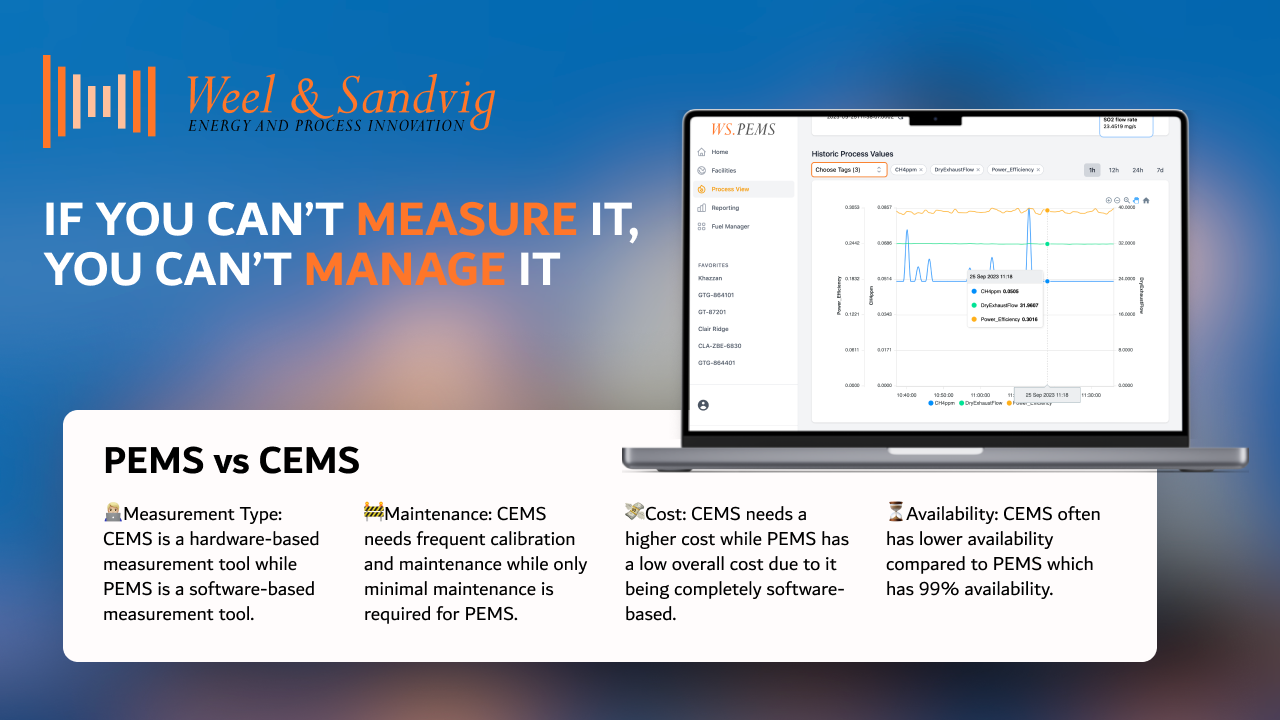Information🔗 No Hardware? No Problem!
The Cost-Effective Advantage of WS.PEMS

Two widely used systems for emission monitoring are PEMS (Predictive Emission Monitoring system) and CEMS (Continuous Emission Monitoring system). While both allow regulatory compliance and informed decision making, they’re widely different in terms of Approach, Costs,and Implementation.
What is CEMS?
Continuous emission monitoring systems (CEMS) are hardware-based tools used to monitor emissions resulting from combustion in industrial processes. They rely on measurement devices installed at the power plants to directly measure gases. CEMS can measure flue gas for O2, CO and CO2 to provide information for combustion control in industrial settings.
However, CEMS also comes with high installation and maintenance costs due to the need for specialized hardware, calibration, and frequent servicing. CEMS can experience operational downtime due to mechanical failures, leading to data gaps and therefore increased maintenance efforts.
What is PEMS?
Predictive emission monitoring systems (PEMS) are model-based tools used for gas turbines, furnaces, flares, boilers and engines. The system continuously calculates and quantifies air pollutant emissions such as: CO2, CH4, NOx, SO2, CO, UHC. WS.PEMS combines the First Principle approach with statistical models to deliver accurate emissions monitoring. It relies on physical laws -like energy and mass balances- to calculate emissions with precision.
To enhance accuracy, WS.PEMS integrates additional physical and empirical relations, considering factors such as pressure, combustion temperatures, and component composition. By simulating combustion conditions, it provides precise calculations of specific emissions using kinetic reaction models. Unlike CEMS, WS.PEMS requires no additional hardware installation, delivering significant savings in both CAPEX and OPEX, along with reduced downtime.
Key Differences?
🧑🏼💻Measurement Type: CEMS is a hardware-based measurement tool while PEMS is a software-based measurement tool.
🚧Maintenance: CEMS needs frequent calibration and maintenance while in PEMS, only minimal maintenance is required.
💸Cost: CEMS needs a high installation period followed by continuous maintenance leading to a higher cost while PEMS has a low overall cost due to it being completely model-based. Overall, PEMS has a 50% average lower capital cost and a 90% lower operating cost.
⏳Availability: CEMS often has lower availability compared to PEMS which has 99% availability.
Overall, WS.PEMS provides continuous emissions monitoring, optimization, and therefore empowers industries to achieve their sustainability goals, and take a step forward in reducing their overall emissions.